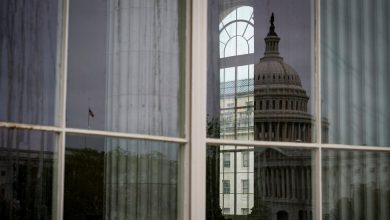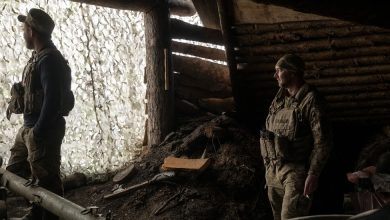Indian and Chinese Soldiers Again Trade Blows at Disputed Border

Indian and Chinese troops wielding fists, clubs and stun guns have again clashed in a disputed border territory, injuring several soldiers on each side and showing that tensions have not been extinguished after a deadly confrontation more than two years ago.
For decades, India and China have been locked in a bitter dispute along a 2,100-mile border known as the Line of Actual Control. Indian defense officials say that Chinese military forces have been increasingly laying claim to territories that have long been under India’s control.
The latest skirmish occurred on Friday in the Tawang sector of the Indian state of Arunachal Pradesh, an area that China claims as an integral part of Tibet. Soldiers briefly confronted each other near a 17,000-foot mountain peak where India maintains a military post. China said it had been conducting a routine patrol on its side of the line, while India said Chinese troops had encroached on Indian territory.
The area is not just strategically important. As the birthplace of the sixth Dalai Lama and home to the largest Buddhist monastery in India, Tawang is also freighted with political symbolism. India took control of the region in 1951, the same year that China annexed Tibet, sending the current Dalai Lama, now 87, into exile in India eight years later.
The long-simmering tension between the nuclear-armed neighbors boiled over in June 2020 in the northern region of Ladakh, when hand-to-hand combat left 20 Indian soldiers and an unknown number of Chinese troops dead. That battle was the worst border clash between the two nations since 1967 and the first fatal confrontation between them along the disputed border in 45 years.
More on India
- Tourism in Kashmir: Visitors are flocking back to the region. Тhat is proof, India says, that its imposition of control worked. But people who live there say fear and uncertainty persist.
- A Deadly Bridge Collapse: After 134 people were killed when a pedestrian bridge collapsed in Gujarat, the country is asking why its infrastructure has failed so calamitously once again.
- Coal Baron or Climate Warrior?: The business decisions of Gautam Adani, Asia’s richest man, could go a long way in determining whether India helps the world avert a climate catastrophe.
- Off to a Bad Start: As the air pollution season began, air quality readings in northern India were especially dire — even by the standards of a region with some of the world’s worst air.
In January 2021, several soldiers were injured in a face-off in Sikkim, a state hundreds of miles west of Arunachal Pradesh.
On Tuesday, India’s defense minister, Rajnath Singh, told Parliament that Chinese soldiers had “encroached upon and attempted to change the status quo” of the disputed frontier, but that Indian soldiers had repelled them.
Mr. Singh said local commanders from each side had met on Sunday to discuss the dispute. He also said that the Indian government had spoken to Chinese officials through diplomatic channels.
“The Chinese attempt was contested by our troops in a firm and resolute manner,” Mr. Singh told the lawmakers.
India’s Army said in a statement on Monday that troops from each side had disengaged from the Line of Actual Control, which is patrolled by soldiers from both countries.
Though apparently quickly remediated, last week’s tussle showed that the border dispute was far from resolved, despite a pledge by each country in September to de-escalate, and a meeting between Prime Minister Narendra Modi and China’s leader, Xi Jinping, on the sidelines of a Group of 20 summit in Indonesia last month.
In a statement foreshadowing last week’s clash, India’s foreign minister, Subrahmanyam Jaishankar, said in Parliament that India’s relations with China were unlikely to return to normal without peace on the border.
Deependra Singh Hooda, a retired lieutenant general who led India’s Northern Command, which covers part of the border with China, said any physical fight between soldiers from the two countries should be viewed seriously, particularly amid a climate of mutual mistrust.
“In this case, the matter seems to have been resolved after a flag meeting, but such clashes have the potential to escalate into a larger local confrontation,” Mr. Hooda said, referring to the meeting of the field commanders on Sunday.
In recent years, the Chinese Army has constructed new roads in the area to connect with a network of military infrastructure that enables its troops to mobilize quickly, said Saurav Jha, editor in chief of the Delhi Defense Review.
“So it was only a matter of time before they started probing,” Mr. Jha said of Chinese soldiers.
Col. Long Shaohua, a Chinese Army spokesman, said troops had been conducting a routine patrol of their side of the disputed border when they were stopped by Indian soldiers attempting to cross the line.
“Our response was professional, standardized and powerful, and we have stabilized the situation on the ground,” he said. “At present, China and India have disengaged.”
Claire Fu contributed reporting from Seoul.



